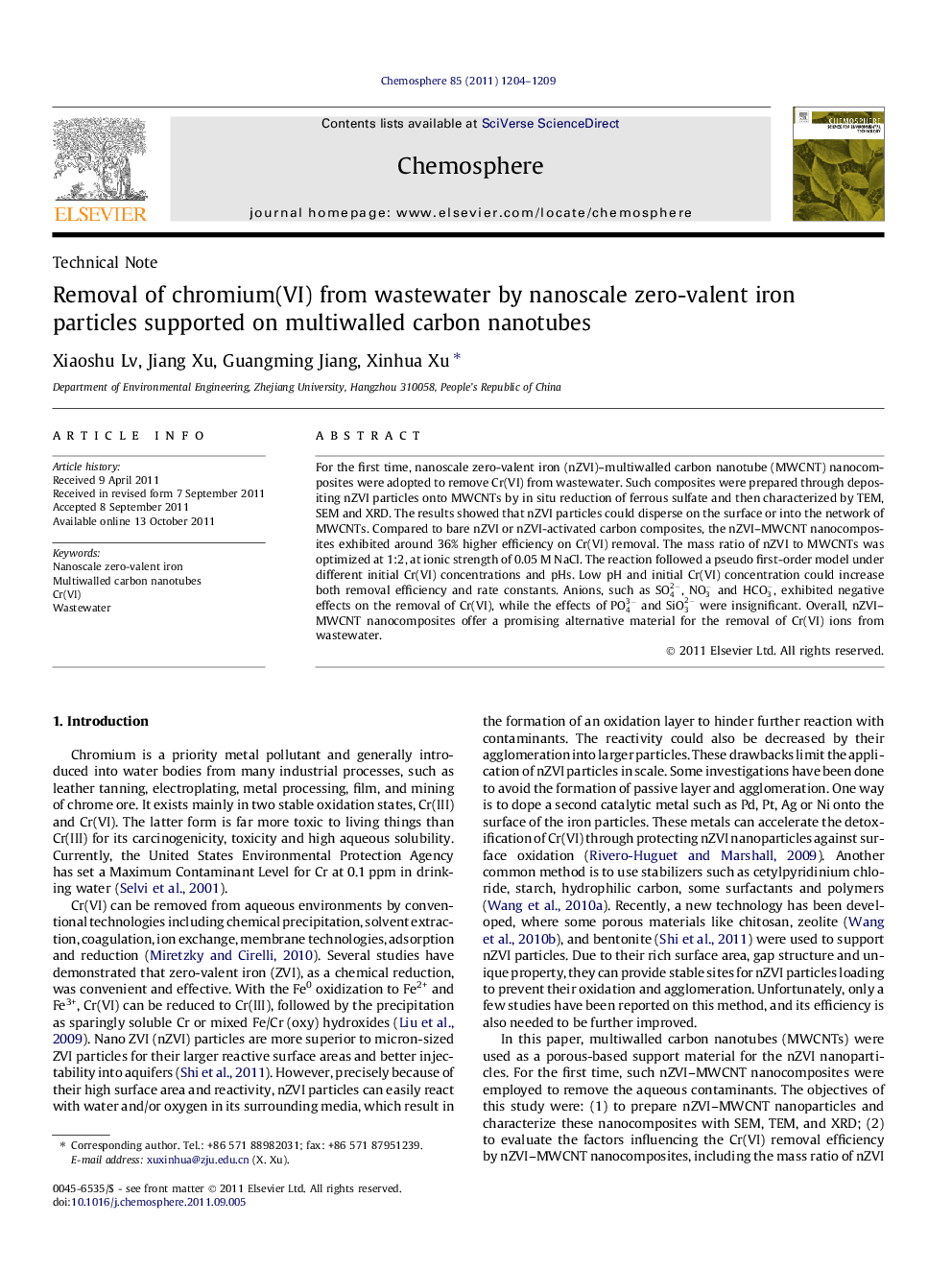| کد مقاله | کد نشریه | سال انتشار | مقاله انگلیسی | نسخه تمام متن |
|---|---|---|---|---|
| 4410251 | 1307535 | 2011 | 6 صفحه PDF | دانلود رایگان |

For the first time, nanoscale zero-valent iron (nZVI)–multiwalled carbon nanotube (MWCNT) nanocomposites were adopted to remove Cr(VI) from wastewater. Such composites were prepared through depositing nZVI particles onto MWCNTs by in situ reduction of ferrous sulfate and then characterized by TEM, SEM and XRD. The results showed that nZVI particles could disperse on the surface or into the network of MWCNTs. Compared to bare nZVI or nZVI-activated carbon composites, the nZVI–MWCNT nanocomposites exhibited around 36% higher efficiency on Cr(VI) removal. The mass ratio of nZVI to MWCNTs was optimized at 1:2, at ionic strength of 0.05 M NaCl. The reaction followed a pseudo first-order model under different initial Cr(VI) concentrations and pHs. Low pH and initial Cr(VI) concentration could increase both removal efficiency and rate constants. Anions, such as SO42-, NO3- and HCO3-, exhibited negative effects on the removal of Cr(VI), while the effects of PO43- and SiO32- were insignificant. Overall, nZVI–MWCNT nanocomposites offer a promising alternative material for the removal of Cr(VI) ions from wastewater.
► Cr(VI) removal by Fe0 loading on MWCNTs nanocomposites was first studied.
► Fe0 on the surface or in the network of MWCNTs was observed by SEM, TEM, and XRD.
► Optimal mass ratio of MWCNTs to Fe0 was found and the efficiency was compared.
► Kinetics under different conditions were tested using pseudo first-order model.
► Effect of ionic strength, pH, and foreign ions on Cr(VI) removal was investigated.
Journal: Chemosphere - Volume 85, Issue 7, November 2011, Pages 1204–1209